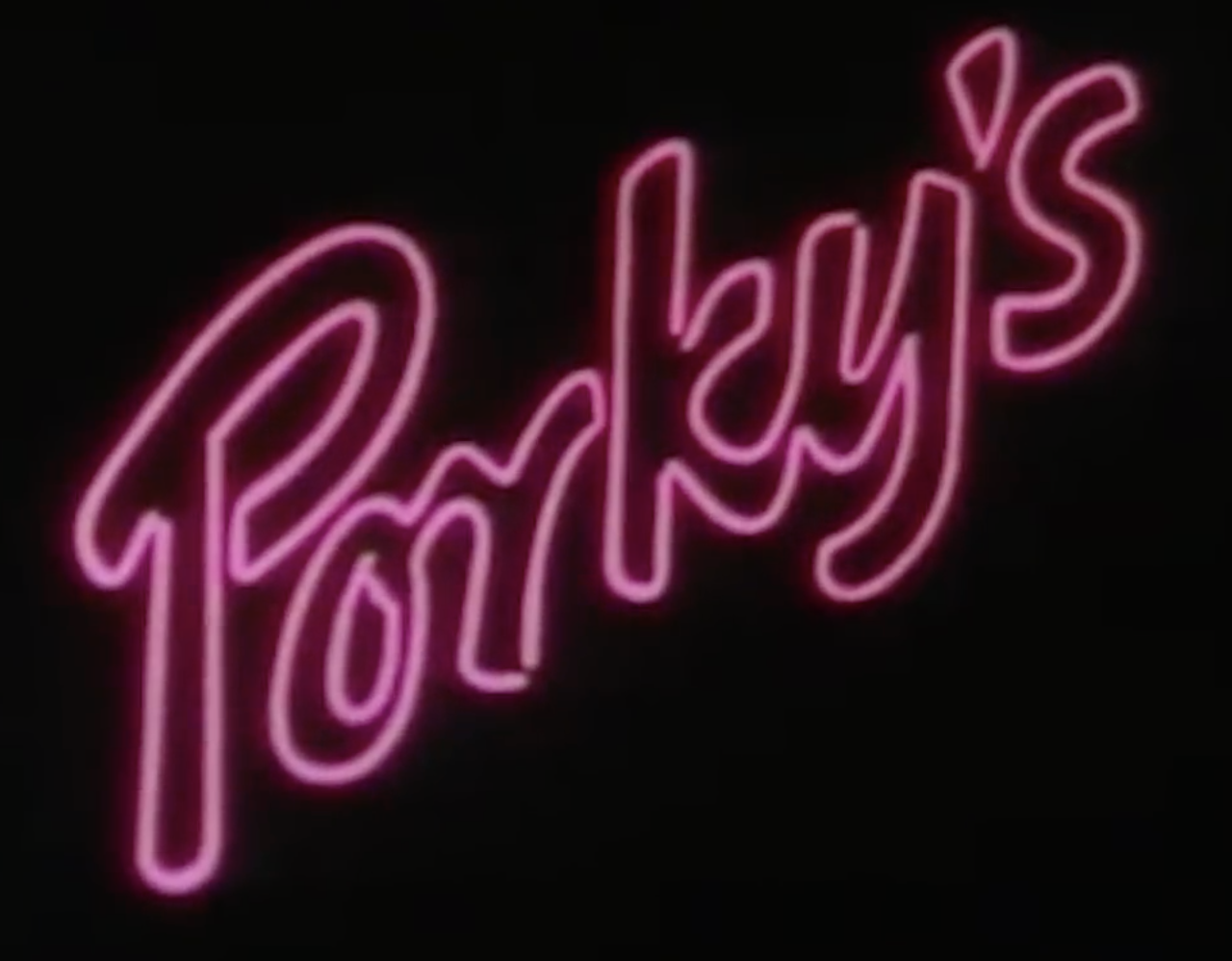During the Christmas period I reviewed American filmmaker Bob Clark’s 1974 classic psychological slasher Black Christmas, an accomplished cinematic achievement which proved to be an influential entry in the horror genre. Yet horror is not the only genre influenced by Clark, nor is Black Christmas the only Canadian production with which he was involved.
Clark’s 1983 film Porky’s, though based in the United States, was a Canadian co-production shot in Canada, and bears a lasting influence on the teen sex comedy genre later produced films such as American Pie, EuroTrip and Road Trip, to name but a few. While I believe Clark’s influence on the slasher genre to be an important one, the sex comedy genre has never really been a critical darling, and for this I believe Clark may be somewhat to blame, as Porky’s not only marks a significant regression in his directorial touch, but is a blueprint for some of the genre’s worst inclinations.
As the genre title suggests, Porky’s revolves primarily around sex and comedy, though there was seemingly a lot more effort put into the former than the latter. Based in 1954, a group of high school students (all male, of course) are on a constant search for their next sexual encounter, especially Edward “Pee Wee” Morris (Dan Monahan), who is the only virgin of the group. The group engage in constant hijinks with pranks and underage drinking, one night deciding to visit Porky’s, a sleazy strip bar in the Everglades. However, after suffering an initial humiliation at the hands of its owner, and another more violent encounter later, the teens seek revenge by putting their pranking skills to use.
My synopsis is perhaps somewhat long-winded here, but this can be chalked down to Clark’s own failure to impart Porky’s with any real sense of meaningful intention. It is essentially a comedic revenge flick built around several set-pieces that almost always relate back to sex in some way. That is not to say that it is without its funny moments, as I still found myself laughing in scenes that flashed comic ingenuity, making some of the set-pieces worthwhile.
Character development too is a mixed bag, as I felt that for most of the film the characters were only defined by their basest impulses, which involve mocking the obesity of a female teacher they do not like (who is named Balbricker…I will leave the phonetics of the name to you), or straight-up spying on the girls’ tumbling team as they shower. What’s more, this activity is exposed when Pee Wee eventually gives them away by shouting “will you move it you lard-ass!” at a heavier girl blocking his view, while the scene depicting its aftermath tries in vain to channel Monthy Python.
All of this encapsulates how women are depicted throughout: either as empty sexual vessels or the butt of offensive jokes. Whichever of the two it may be at any given time, both are executed without a lick of originality or taste.
There are, however, faint glimmers of Clark’s knack for the dynamic character work found in Black Christmas. This is most apparent when Porky’s bridges into its final act, where potentially problematic racial tensions from earlier are thankfully resolved, injecting some much-needed depth into two of his characters.
Yet things continue to go downhill from here again, with a conclusion that is as outrageous as it is utterly uninspired. It is the type of conclusion one would imagine a screenwriter to initially gravitate towards, only to almost immediately think better of it.
My most consistent grievance with Porky’s, though, is that in comparison to the engagingly creative camerawork found in Black Christmas, many of the shots can feel quite flat and, frankly, disengaged, which is quite shocking when considering that the cinematography in both films is handled by Reginal H. Morris. I understand that horror can afford greater opportunity for interesting angles and camera pans than comedy, but not one shot jumped out at me or made me feel like they were trying to catch my attention, which is probably why the film relies on its cheap nudity and gags.
Porky’s might have been an unmitigated success at its time, reeling in a staggering $100 million on a modest $4-5 million budget, with a modern-day cult following to boot, but it certainly has not aged well. If a genre-defining comedy like, say, Airplane! is a fine wine, then Porky’s is flat soda.
![]()
![]()
![]()
![]()
![]()
![]()
![]()
![]()
![]()
![]()

